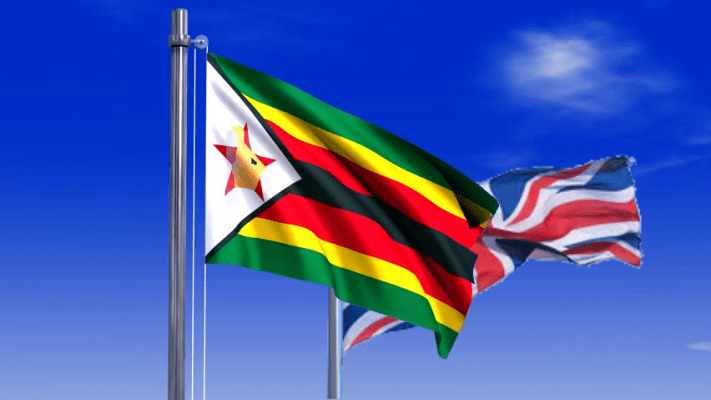The NDS1 targets in focus
The aim for Zimbabwe is to attain a growth rate of at least 5 percent per annum till 2025.
The Zimbabwean economy has been growing by an average of 5,6 percent between 2009 and 2022 which is higher than its regional neighbours as per the World Bank Country Statistics.
The average growth rate (13,4 percent) for the period between 2009 and 2013 is 12,9 percentage points higher than that of the period between 2018 and 2022, with part of the difference being attributed to the advent of Covid-19 in 2020 and a relatively volatile macroeconomic environment in the latter period.
With macroeconomic and political stability, growth rates of at least 5 percent per annum are achievable. The Agenda 2030 is targeting to attain an upper-middle-income society by 2030 with a GNI per capita between US$4 046 and US$12 535 (2021).
Zimbabwe recorded a GNI per capita of US$1,530 in 2021, implying a lower-middle-income economy in the current state. The policymakers are hopeful of an Asian Miracle.
As the economy pursues a growth agenda centred on “leaving no one and no place behind”, the course of action has been to allow the private sector to take the lead in the recovery and growth of Zimbabwe.
Thus, Zimbabwe seeks to create an open, private sector-led, and competitive economy. Currently, the Government is the major player in the Zimbabwean economy.
According to the Ministry of Finance and Economic Development (August 2023), the Zimbabwean economy is now expected to grow by 5,3 percent in 2023, up from the initial projection of 3,8 percent.
This comes on account of a strong performance in agriculture (9,7 percent), ICT (4,9 percent), accommodation and food services (20,5 percent), and improvements in the supply of power after the successful synchronisation of Hwange 7 and 8.
Maize output is expected to exceed 2 million tonnes in 2023, up from 1,5 million tonnes recorded in 2022. Tobacco output reached a record high of 295 kilogrammes in 2023.
Within the agriculture sector, the private sector has taken a stance to lead the financing of the production of tobacco and grains after the Government opened up the market for private sector-led agricultural production.
In terms of openness to trade, the country’s participation in the African Continental Free Trade Area has resulted in the opening up of the country’s borders to the free movement of goods and in the near future, to the free movement of people.
However, Zimbabwe falls behind many Sub-Saharan African countries like South Africa, Rwanda, Mauritius, Seychelles and Nigeria, among others, in terms of international competitiveness.
Concrete and deliberate efforts are needed to significantly bring about the necessary reforms and positive change in the macroeconomic environment, investment climate, ease of doing business and the political environment.
Sectors such as mining have been attracting a huge chunk of foreign direct investment, especially on the extractive side. More so, significant investment is also being afforded to the processing of minerals as the value-addition efforts start to bear fruit.
New investment into the agriculture sector remains sluggish due to property rights issues pertaining to the ownership and control of land. The finalisation of the 99-year leases can prompt considerable long-term investment into the agricultural sector.
For Zimbabwe and according to the Ministry of Finance and Economic Development, the Total Public and Publicly Guaranteed Debt as a percent of GDP stood at 99,6 percent as of December 31, 2022.
The total debt to GDP ratio of 99,6 percent exceeds the 70 percent threshold provided for in the Public Debt Management Act (Chapter 22:21) implying that the country is in debt distress.
The NDS1 seeks to maintain public and publicly guaranteed external and domestic debt to GDP ratio at below 70 percent of GDP and this has been hard to come by.
Thus, the efforts to external debt arrears as well as re-engagement with international creditors and financiers should be strengthened with a view to opening up international lines of credit. As per the 2022 ZNCC Annual State of Industry and Commerce Survey, the country is in dire need of patient, but
cheap capital for recapitalisation across all sectors.
While the private sector acknowledges the various external debt-clearing strategies such as the coming on board of the African Development Bank (AfDB) in championing debt clearance, the fruits remain to be seen as they can be realised in the medium-to-long term.
Between 2021 and 2025, the Government seeks to achieve and maintain single-digit inflation of between 3 percent and 7 percent in line with the SADC Macroeconomic Convergence Target.
Mid-way into the NDS1 implementation period, on a yearly basis, local currency inflation has been averaging above 200 percent to the extent that the Government had to stop releasing local currency inflation figures and introduce a new method of calculating inflation.
The currency challenge remains the elephant in the room and by 2025, the target is for the Zimbabwean dollar to become the sole legal tender.
2025 is just about two years down the line and the dominance of the US dollar in transactions is increasing on a weekly basis to the extent that about 80 percent of transactions are now being undertaken in foreign currency.
The acceptability of the Zimbabwean dollar as a medium of exchange is dwindling by the day. Some taxes and duties are being paid for in foreign currency signalling a lack of political will to de-dollarise and embrace the local currency.
However, a notable positive was the move by the Government to establish a market-determined and competitive foreign exchange regime.
The policy move by the authorities to liberalise the foreign exchange market by allowing commercial banks to take the lead through the interbank foreign exchange market, have been critical in enhancing the stability of the Zimbabwean dollar.
However, the implementation of this policy move was a bit delayed, and a question of fundamental importance at the moment is whether the Zimbabwean dollar is stabilising or losing relevance. Critically, the Zimbabwean dollar is still relevant.
In the 2017 Mid-term Monetary Policy Statement, the Reserve Bank of Zimbabwe (RBZ) clearly and unequivocally spelled out the indispensable pre-conditions for the return of the local currency as follows: sustainable foreign exchange reserves (equivalent to one-year import cover); sustainable Government budget, demonstrable consumer and business confidence, the health of the job market, and average industrial capacity utilisation of above 75 percent.
Total official reserves (including gold) were estimated to be around US$590 million in 2022. This can only cover about one month of imports.
To put this into perspective, Zimbabwe’s imports for the month of January 2023 totalled US$635 million and imports for the first quarter of the year alone totalled US$2 billion.
Given the high demand for USD, the country had a US$970 million gap in foreign currency supply despite receiving record-breaking forex receipts in 2022.
Business confidence is generally low in the economy, there is a confidence deficit. During the period between May and September 2022, ZNCC through the State of Industry and Commerce Survey reported that business confidence was in the negative signifying pessimism and this could have been worsened by the current political environment.
With over 65 percent of the economy being informal, many people are still unemployed and underemployed, and many do not have decent jobs, which is a constitutional right as per the dictates of Section 24(1) of the country’s constitution.
Levels of productivity in industrial sectors have declined especially for ZW$ earners as the real wage has fallen drastically. Between 2021 and 2025, the Government seeks to create 760 000 formal jobs.
To achieve the NDS1 targets, partnership for goals is critical. The NDS1 document also puts strategic emphasis on this aspect. All stakeholders need to come on board for Project Zimbabwe to work.
As the NDS1 places the private sector at the centre stage of the country’s recovery and growth agenda, sound reforms and political will are indeed fundamental to creating an enabling environment for the private sector to flourish.
The areas of focus are cementing the rule of law, deepening macroeconomic stability, reversing negative perceptions, and focusing on productivity not production in sectors such as agriculture, mining, education and manufacturing.
The NDS1 targets are achievable and it requires political will to walk the talk.
This article was prepared by the Zimbabwe National Chamber of Commerce for Business Weekly.










